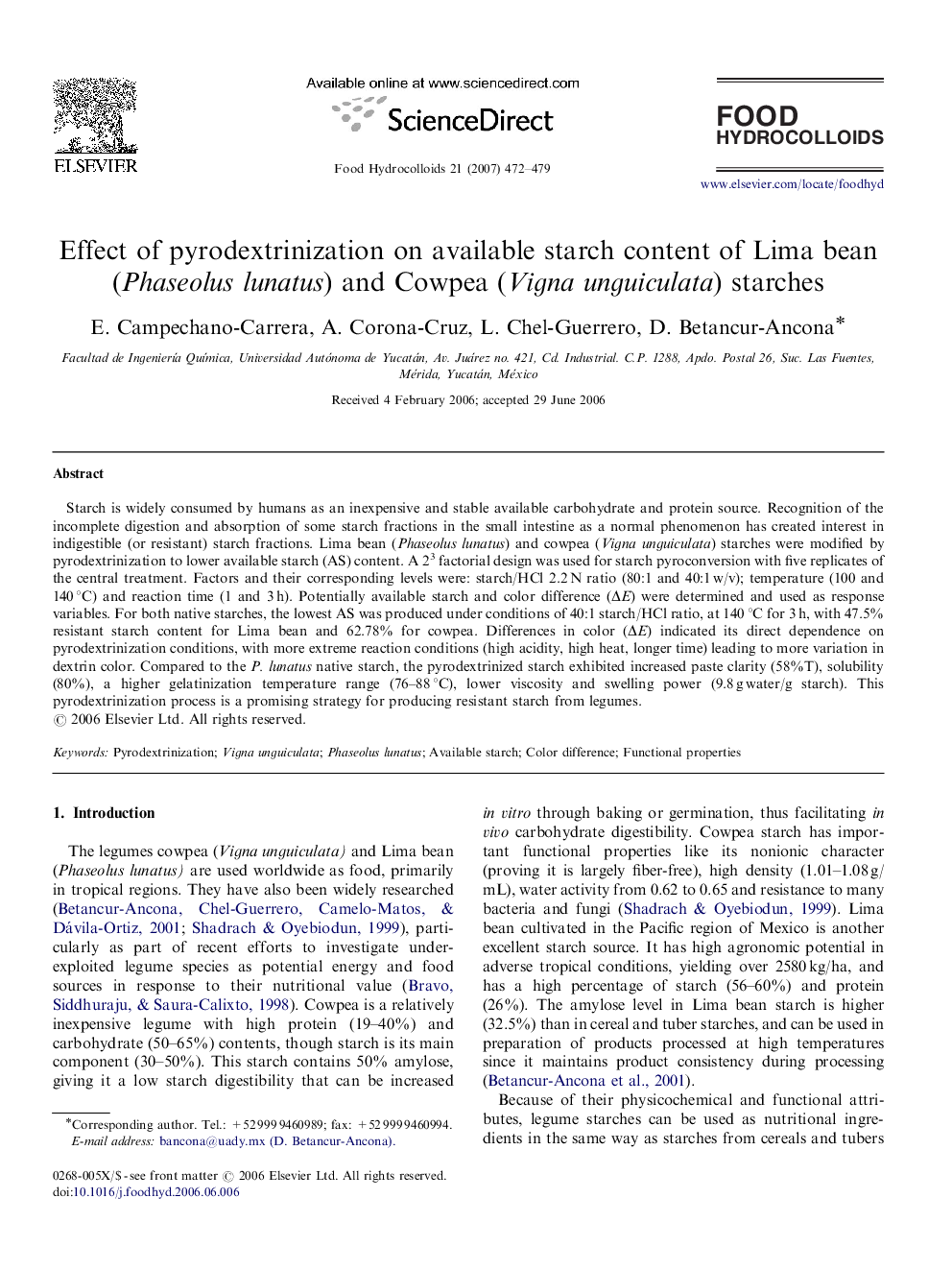| Article ID | Journal | Published Year | Pages | File Type |
|---|---|---|---|---|
| 605905 | Food Hydrocolloids | 2007 | 8 Pages |
Starch is widely consumed by humans as an inexpensive and stable available carbohydrate and protein source. Recognition of the incomplete digestion and absorption of some starch fractions in the small intestine as a normal phenomenon has created interest in indigestible (or resistant) starch fractions. Lima bean (Phaseolus lunatus) and cowpea (Vigna unguiculata) starches were modified by pyrodextrinization to lower available starch (AS) content. A 23 factorial design was used for starch pyroconversion with five replicates of the central treatment. Factors and their corresponding levels were: starch/HCl 2.2 N ratio (80:1 and 40:1 w/v); temperature (100 and 140 °C) and reaction time (1 and 3 h). Potentially available starch and color difference (ΔE) were determined and used as response variables. For both native starches, the lowest AS was produced under conditions of 40:1 starch/HCl ratio, at 140 °C for 3 h, with 47.5% resistant starch content for Lima bean and 62.78% for cowpea. Differences in color (ΔE) indicated its direct dependence on pyrodextrinization conditions, with more extreme reaction conditions (high acidity, high heat, longer time) leading to more variation in dextrin color. Compared to the P. lunatus native starch, the pyrodextrinized starch exhibited increased paste clarity (58%T), solubility (80%), a higher gelatinization temperature range (76–88 °C), lower viscosity and swelling power (9.8 g water/g starch). This pyrodextrinization process is a promising strategy for producing resistant starch from legumes.
